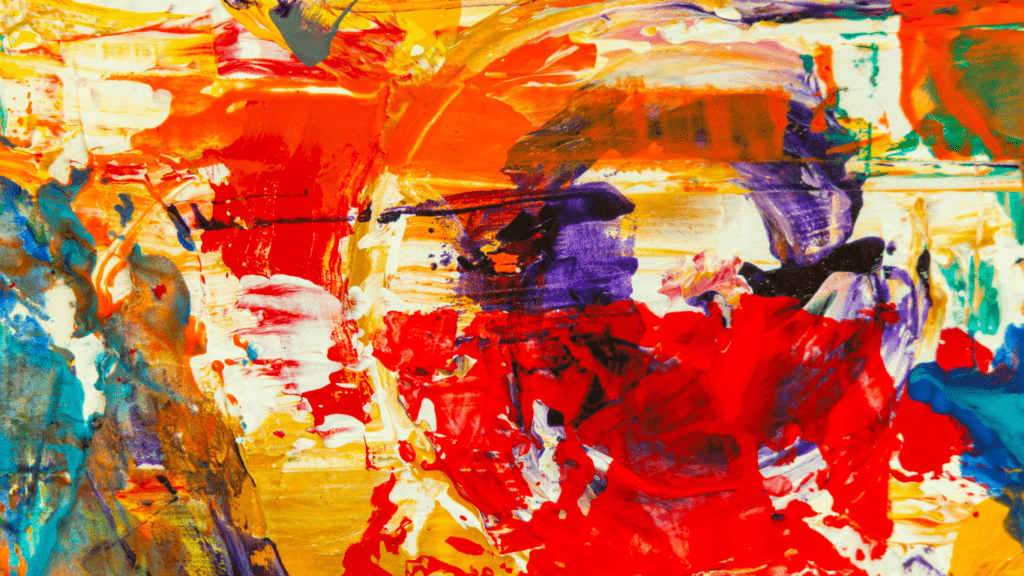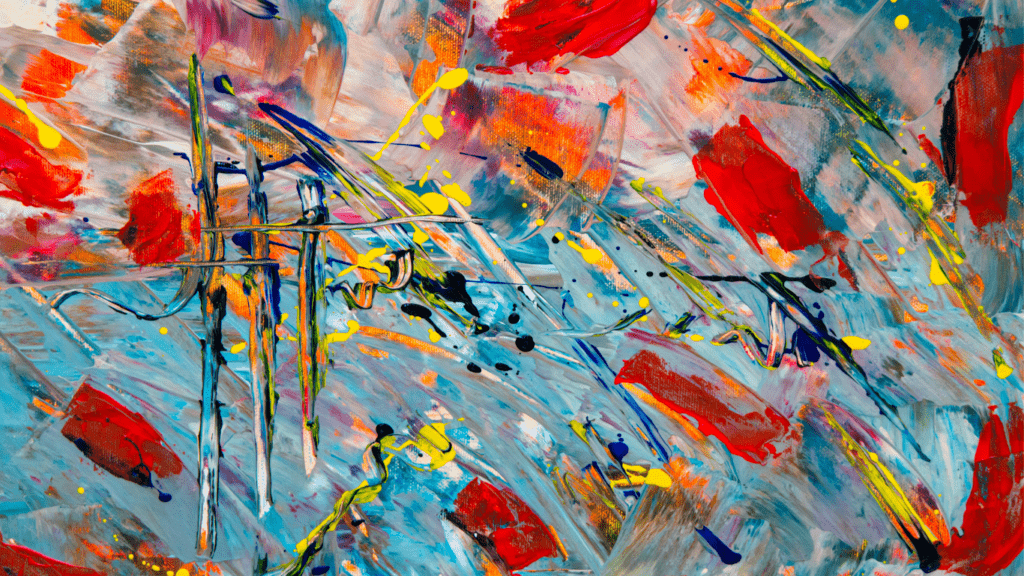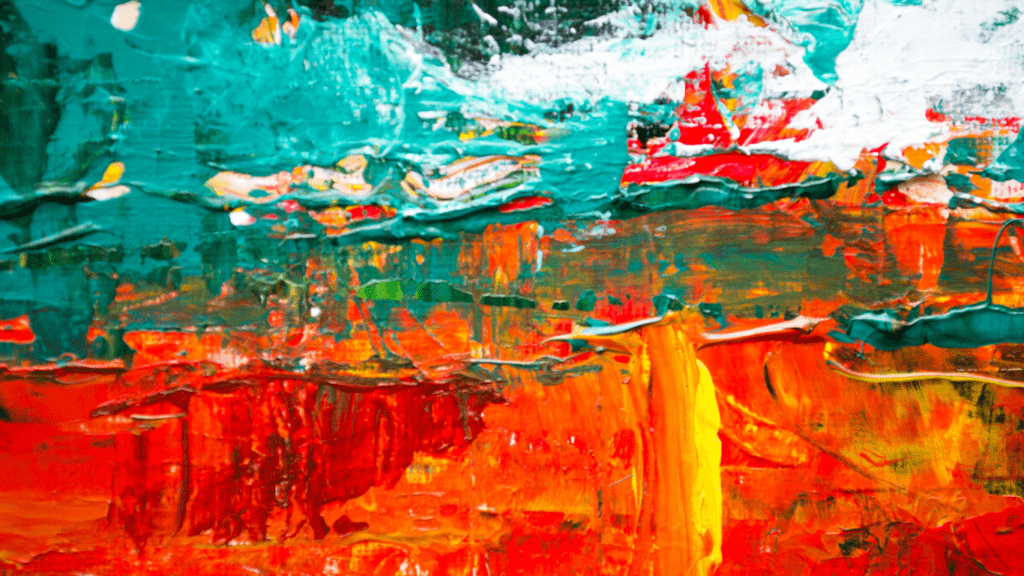Historical Context of Abstract Expressionism
Abstract Expressionism emerged in the 1940s, predominantly in New York City. This period followed the devastation of World War II. Artists sought new ways to express complex emotions and experiences. Traditional art forms seemed inadequate given the magnitude of global trauma. This movement coincided with the rise of the United States as a global cultural hub, shifting the art world’s focus from Europe to America.
Key figures include Jackson Pollock, known for his drip paintings, and Mark Rothko, famous for his color fields. These artists rejected realistic representation, instead favoring abstraction. They were greatly influenced by Surrealism, which emphasized the unconscious mind. Abstract Expressionists aimed to convey emotional depth and spontaneity, which resonated with viewers on a profound level.
The movement was also a response to socio-political conditions. During the Cold War, Abstract Expressionism became a symbol of artistic freedom. This contrast with the repressive regimes of Eastern Europe and the Soviet Union highlighted the cultural and ideological divide.
The New York School played a vital role in the development of Abstract Expressionism. Galleries like the Art of This Century gallery, owned by Peggy Guggenheim, provided a platform for these artists. Critical support from figures like Clement Greenberg helped legitimize and promote the movement.
These factors collectively created an environment where Abstract Expressionism could thrive, making it a defining art movement of the mid-20th century.
Key Figures and Influences
Abstract Expressionism’s impact is underscored by the influential artists and thinkers who shaped the movement. Key figures like Jackson Pollock and Mark Rothko brought unique styles and philosophies that continue to resonate.
Jackson Pollock
Jackson Pollock revolutionized the art world with his drip painting technique. Dispensing paint directly onto canvases, he created dynamic compositions that embraced spontaneity and physicality. Pollock’s work, such as No. 5, 1948, broke from conventional methods, allowing viewers to experience the raw process of creation. His influence extends beyond art, impacting broader cultural perspectives on creativity and self-expression.
Mark Rothko
Mark Rothko’s contributions lie in his distinctive color field paintings, which explored the emotional impact of color and form. Utilizing large, rectangular blocks of color, Rothko aimed to evoke profound emotional responses from viewers. Works like Orange, Red, Yellow highlight his use of varying shades to create depth and mood. Rothko’s emphasis on the spiritual and contemplative aspects of art set him apart, reinforcing the movement’s focus on internal experiences.
Together, Pollock and Rothko’s legacies exemplify the diverse approaches within Abstract Expressionism, influencing artists and thinkers across generations.
Core Principles of Abstract Expressionism
Abstract Expressionism, with its fragmented forms and sense of raw immediacy, resonates with many even today. Central to this movement are concepts that emphasize freedom and emotional depth.
Emphasis on Spontaneity
Artists like Jackson Pollock epitomize spontaneity. Pollock’s drip painting technique allowed him to create without premeditation, leading to dynamic, unpredictable compositions. These works reflect an artist’s immediate thoughts, feelings, and movements. The process itself, often seen as a performance, is crucial. Spontaneity births originality, breaking away from rigid norms to explore new artistic methods.
Focus on Emotion
- Abstract Expressionists aim to evoke profound feelings through their art.
- Mark Rothko’s color field paintings, for instance, utilize large swathes of color to stir deep emotional responses in viewers.
- These artists reject literal representation in favor of conveying internal experiences.
- Emotion becomes the central subject, and the artwork acts as a medium for personal expression.
- The intensity of these feelings ensures that the resonance of Abstract Expressionism persists over time.
Cultural Impact in the Mid-20th Century
Abstract Expressionism reshaped the cultural landscape of the mid-20th century. Its rise in post-World War II America, coinciding with New York City’s ascent as a global cultural hub, fostered a new era of artistic freedom. This movement symbolized the emotional liberation and existential exploration prevalent during that time.
Political Climate and Artistic Freedom

The Cold War backdrop played a significant role in the movement’s impact. As tensions between the US and the Soviet Union grew, Abstract Expressionism emerged as a testament to the freedom of expression in Western democracies. Unlike Soviet Realism, which was state-prescribed, this style celebrated individuality and non-conformity. In 1952, the US government even sponsored international tours of Abstract Expressionist works, showcasing the nation’s cultural vibrancy.
Institutional Support
Institutions like the Museum of Modern Art (MoMA) and the New York School bolstered the movement. Peggy Guggenheim, a prominent art collector, and critic Clement Greenberg championed these artists, ensuring their works were seen by global audiences. Their support underscored the importance of avant-garde art in American culture.
Media Influence
Media coverage also played a crucial role. Magazines like Life and Time featured articles and images of Abstract Expressionist art, bringing it into the public eye. Jackson Pollock, dubbed “Jack the Dripper” by Life in 1949, became an icon of this new art style, his works symbolizing the movement’s innovative spirit.
Cultural Exchange
Abstract Expressionism facilitated cultural exchanges between American and European artists. While many New York artists drew inspiration from European Surrealism, they also influenced European art movements of the time. This cross-pollination enriched the global art scene, establishing a legacy of mutual influence and respect.
Evolution in Art Education
Art education evolved significantly during this period, with universities and art schools incorporating Abstract Expressionist principles into their curricula. This shift emphasized the importance of personal expression and experimentation, shaping future generations of artists and continuing the movement’s influence in contemporary art practices.
Enduring Legacy and Modern Relevance
Abstract Expressionism continues to shape and influence the art world today. Its impact can be seen across various domains, from contemporary art to popular culture.
Influence on Contemporary Art
Abstract Expressionism’s impact on contemporary art is undeniable. Many modern artists draw inspiration from pioneers like Pollock and Rothko. These influences manifest in techniques such as gestural brushstrokes, non-representational forms, and a focus on emotional depth.
For instance, artists like Gerhard Richter and Anish Kapoor incorporate elements of abstraction and emotional resonance in their works. This movement also paved the way for later avant-garde movements, including Minimalism and Pop Art, by challenging conventional artistic boundaries.
Presence in Popular Culture
Abstract Expressionism has permeated various facets of popular culture. Its influence appears in fashion, film, and music album covers. For example, the bold, expressive styles of designers like Alexander McQueen often reflect the dynamic and emotional qualities of Abstract Expressionist works.
In film, directors like Darren Aronofsky draw on the movement’s emphasis on raw emotion and spontaneity, creating visually compelling narratives. Music album covers, like those designed for bands such as The Rolling Stones and Radiohead, exhibit abstract and emotive elements reminiscent of Abstract Expressionism.
Abstract Expressionism’s enduring legacy and modern relevance highlight its importance as a transformative art movement. Its influence on contemporary art and presence in popular culture demonstrate its continued resonance in today’s creative landscape.
Criticisms and Controversies
- Criticisms of Abstract Expressionism have existed since its inception. Some argue that the lack of recognizable forms makes the art inaccessible. They claim it alienates viewers unfamiliar with modern art. Others suggest it’s overly indulgent, focusing too much on the artist’s emotions rather than the viewer’s experience.
- Financial aspects have also sparked debates. Abstract Expressionism’s rise in art markets has led to questions about commodification. Detractors argue that high prices for these artworks undermine their supposed anti-establishment ethos. For example, Jackson Pollock’s “No. 5, 1948” sold for $140 million in 2006, casting a spotlight on the art-commerce nexus.
- Gender and diversity disparities within the movement face criticism too. The prominence of male artists like Pollock and de Kooning has overshadowed contributions from female artists and artists of color. Figures such as Helen Frankenthaler and Norman Lewis, though significant, have often been marginalized in historical accounts.
- Academic disputes contribute to the controversies. Some scholars argue that the movement’s intellectual underpinnings are overstated. They believe the emphasis on spontaneity and subconscious creation lacks depth. Others counter that these elements provide profound insights into human psyche and emotion.
- Government involvement has been another contentious point. Evidence suggests the CIA funded Abstract Expressionism propaganda during the Cold War. Critics question the authenticity of the movement’s roots in pure artistic freedom when political agendas are considered.
Despite these criticisms and controversies, Abstract Expressionism’s influence persists. Its capacity to evoke emotion and challenge traditional perceptions keeps it relevant. The movement continues to inspire debate, reflecting its complex and multifaceted legacy.





